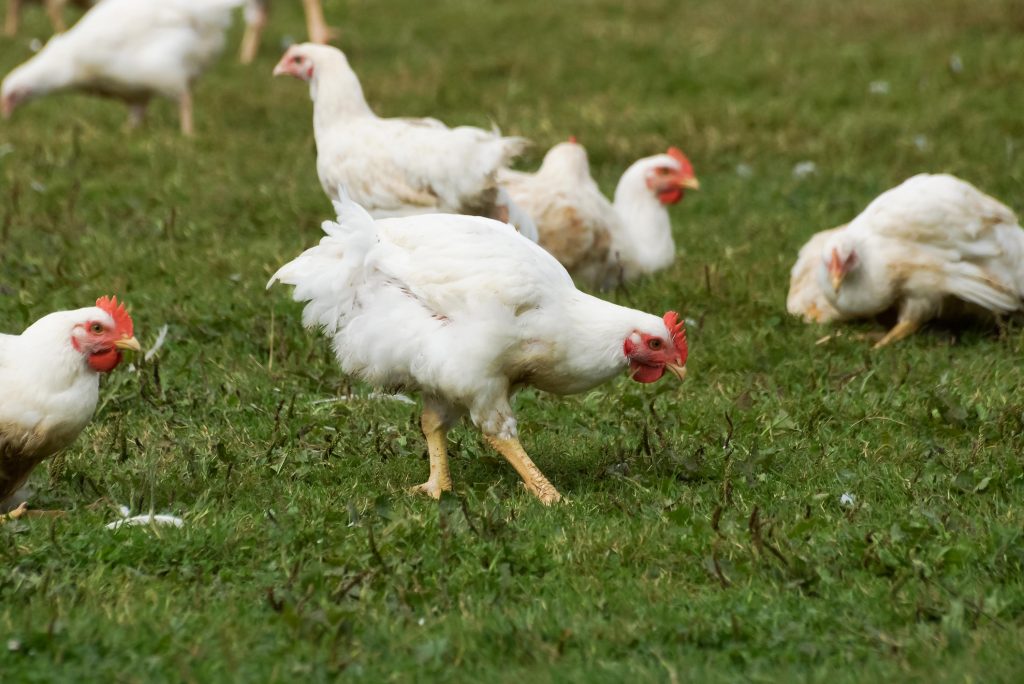The most costly part of homesteading is, of course, buying the land you plan to homestead on. However, if you have no or very limited money, you can start homesteading long before you buy your own land.
In this article, we’ll show you how to preserve food, mend your own clothing, barter for goods and more. You’ll learn to minimize your expenses and cut unnecessary items out of your life to get onto your homestead more quickly and keep costs down once you’re there.
What is Homesteading?
Many people think that homesteading means you have to own a farm and live completely off the land, but that isn’t the case. Even people who live in the city can start practicing some basic homesteading principles.
Homesteading is mostly associated with growing your own food, but there’s more to it than that. Preserving your own food, creating or repairing your own clothing and textiles and other crafts are all a part of homesteading too.
So there are varying degrees to which someone may be considered a homesteader. Some people may do a few homesteading activities as a hobby or just to save a bit of money. For others it’s a whole lifestyle and they try to be as self-sufficient as possible.
How Do People Afford Homesteading?
To grow the majority of your own food, you’re going to need to have a lot of land. Most estimates suggest that you need at least two acres of arable land to grow enough food for a family of four. So if you’re living in the city and working at a low-paying job, it might seem impossible to ever own a small farm of your own.
People in your exact position have managed to do it though. It just takes a bit of financial discipline and budgeting to start saving money. We’ll be honest: it might take several years, but eventually you’ll be able to afford that down payment on your dream property.
Saving up money to afford a homestead is a lot like starting to diet and exercise to lose weight. It’s uncomfortable and isn’t very fun inthe moment, but you have to persevere if you hope to reach your final goal.
All the hard work and sacrifice will be worth it when you step onto your new property for the first time. So why not get started today? The alternative is that you stay stuck in your current position dreaming about living the homestead lifestyle forever.
Throughout this article we’ll share tips and ideas to help you get started on your homesteading journey.
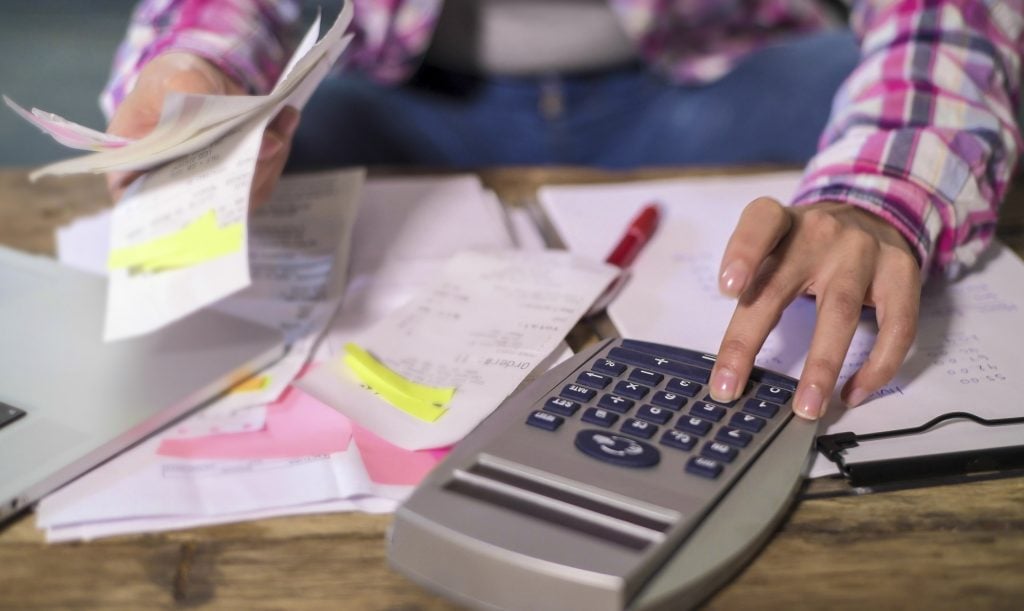
1. Get Out of Debt (and Stay Out!)
The average person today has all kinds of debt. You might have student loan debt, a loan on one or two cars, a mortgage on your house, several maxed-out credit cards and more.
Before you can start saving up to afford a larger and more expensive property, you’re going to have to get yourself out of debt first.
If you’re already debt-free, great! However most people will probably need to spend a couple of years paying down existing debt before they can really get started.
Many homesteaders we’ve talked to have followed the “debt snowball method” created by financial advisor and radio host Dave Ramsey. To use this method, you start by paying off your lowest debt balance first. Gradually you work up to paying off bigger and bigger debts.
For those with a lot of debt, you may want to check out Dave Ramsey’s free videos on Youtube. He has lots of other advice to offer to help save money and reduce debt.
If you’re really in a bad position, you may want to meet with a financial advisor to get more personalized advice. A debt consolidator can also help you to negotiate with creditors and perhaps get a lower interest rate.
Unsurprisingly, one of the biggest reasons people get into debt is buying things or living a lifestyle that’s outside of what they can afford. To really pay off your debt quickly, you might have to make some sacrifices.
If you’ve bought an expensive new car that’s more than you can afford, you may have to sell it and drive an older, used model for a few years. If your mortgage payments are eating up most of your paycheck each month, you might have to downgrade to a smaller home or rent for a few years to save money.
2. Make Your Own Skin and Hair Products
There are a million fancy skin and hair care brands out there, but the truth is that many of them are almost identical: manufactured in the same factories without much quality control — you’re just paying for branding!
Not only will the skin and hair products you make at home be far less expensive, they’ll likely be much healthier for your body, too.
3. Grow Your Own Microgreens
Not only will growing microgreens at home provide you with an excellent way to nourish your body for less money, but if you do it on a larger scale, it can become an excellent income stream. Learn more in our ultimate guide to growing microgreens.
You could even start an urban farm while living in the city. Our Urban Farming Ultimate Guide and Examples will teach you everything you need to know.
4. Make Your Own Soap
Making your own soap is a simple way to increase your self-sufficiency, and when you make it in bulk, it can help you save money. You’ll need a few basic supplies (many of which are already in your kitchen, like bowls, a saucepan and a spatula) and some soap making ingredients.
This is a basic recipe to get you started. Keep in mind that soap needs to cure for at least a month before you can use it, so plan ahead.
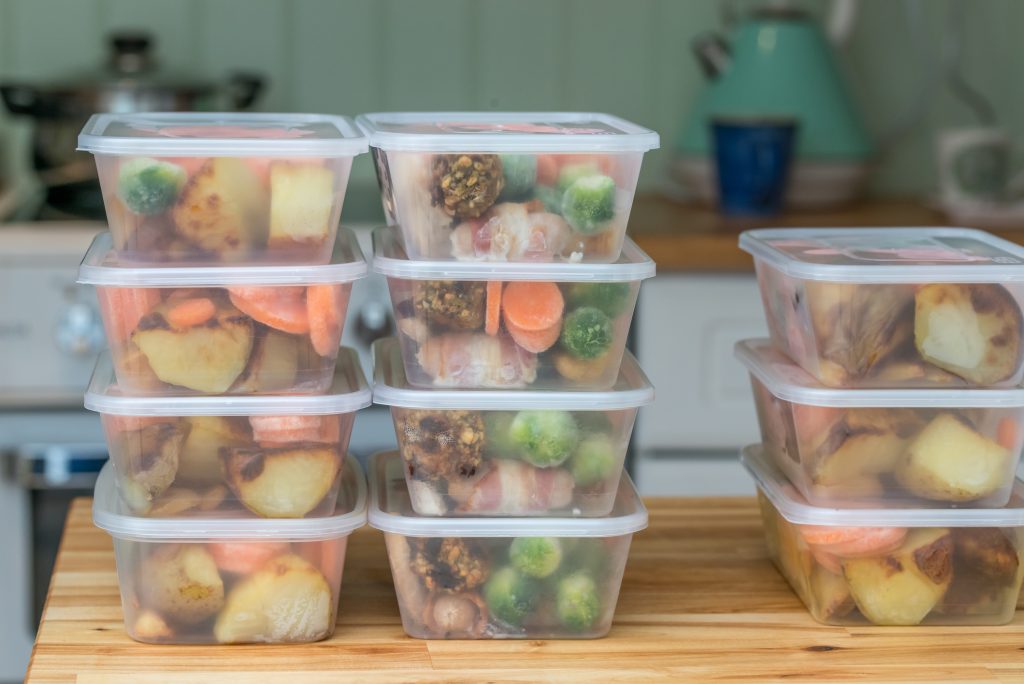
5. Create a Meal Plan
If you leave meal planning to the last minute, you’re more likely to opt for the more convenient option and just order takeout or delivery instead.
Cooking your own food is a great way to reduce your food spending. Especially during the summer and autumn months when fresh produce is less expensive.
Pick a few easy-to-make dishes that everyone in your family loves and get into the routine of making them on the same night each week. So Monday might be spaghetti and meatballs, Tuesday can be taco night and so on.
6. Learn About Herbal Remedies
If you’re dealing with a serious health condition or injury, you should always see a medical professional, but some minor health hiccups can be treated more inexpensively (and sometimes more healthfully) at home using herbs from your garden.
For instance, peppermint tea can help with indigestion and vomiting and lavender can help with insomnia.
7. Make Coffee at Home
Little things like stopping at Starbucks every day can really add up. It’s easy to think that small purchases here and there won’t do much damage, but every dollar counts if you’re really serious about saving up for homesteading.
8. Start Growing Your Own Food
Tending a small garden is how many people get started with homesteading. If you want to live a self-sufficient lifestyle, then chances are that you don’t mind getting your hands a little dirty.
Any food that you can grow for yourself will help to cut down on your grocery bills. Fresh herbs and leafy greens like lettuce and spinach grow quickly. Plus they tend to be one of the most expensive items by weight at the grocery store.
Starting a garden doesn’t have to be expensive. If you’ve already got some dirt to grow in, then all you need is a packet of seeds. Give your plants some sun and water and they’ll take care of the rest.
You can start a garden even if you live in an apartment with a balcony. See our article How to Plant a Milk Crate Garden for one type of compact container garden.
9. Start Preserving Food
Unless they’re living in the tropics where plants will grow year-round, all homesteaders need to learn how to preserve food. Otherwise you won’t be able to store produce to get proper nutrition during those cold months when nothing grows.
Even if you aren’t growing fruits and vegetables yourself, you can take advantage of sale prices to stock up on food and preserve it yourself.
For example, tomatoes are most flavorful and tend to cost the least during the summer. So when prices are cheap, buy a whole bunch and create enough pasta sauce and canned tomatoes to last you all winter long.
Canning, dehydrating, freezing, pickling and cold storage are all preservation techniques that you’ll want to try out.
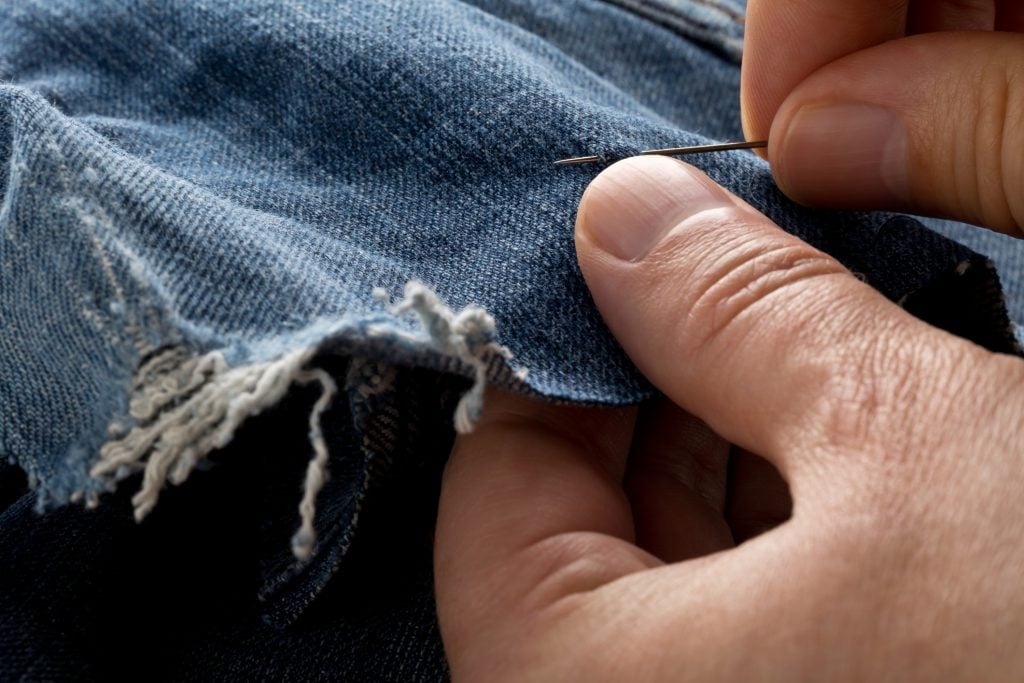
10. Learn To Sew or Knit
Learning how to make your own clothes can seem like a daunting task, but you don’t have to start off with complicated things.
Just figuring out how to hem your own pants or fix small rips and tears will help to save you money. You would be surprised what you can fix with just a needle and thread. A sewing machine isn’t needed right away if you’re just going to be doing small mending jobs.
11. Start Composting
Any food scraps or vegetables that have gone bad shouldn’t go in the garbage. Set up a composter in your yard instead! Not only is it better for the environment because you’ll be reducing your waste, but composting will also produce you with high-quality soil to grow your own plants in for free.
Just throw all of your vegetable scraps and occasionally some leaves or grass clippings into your composter and nature will take care of the rest. It’s hard to get wrong or mess up. Just avoid putting in items like meat, dairy products or oils.
12. Raise Backyard Chickens
You’ll need to look at your local bylaws before trying to raise chickens in your backyard. But a surprising number of communities allow it. Chickens are also a great animal to start with if you’re interested in raising livestock.
Making a little hutch out of scrap wood for your chickens won’t cost you very much. Baby chicks will only cost you a few dollars as well. During warmer months they can mostly get by on eating grass and bugs and kitchen scraps. So for very little time and money, you won’t need to buy eggs from the store for years to come.
13. Start Looking for Cheap Land
If you live in a big city, then land is going to be prohibitively expensive around you. You’ll most likely need to start looking at moving an hour or more away from any major city to find reasonable prices on land for your homestead.
For those living in more expensive US states like Hawaii, California or New York, you might need to look at relocating even further. If you’re willing to relocate across the country to somewhere like Iowa or Nebraska, land can be a fraction of what you’d pay in other areas.
If you’re serious about homesteading, then you might need to move into the middle of nowhere to get a steep discount on a piece of land.
That might mean you won’t have access to high-speed internet or be able to get a pizza delivered. But if freedom and living off the land are what’s most important to you, that’s a sacrifice you’ll most likely be willing to make.
Stuck on how to earn some income? Check out our article How To Make Money Homesteading: 48 Ways
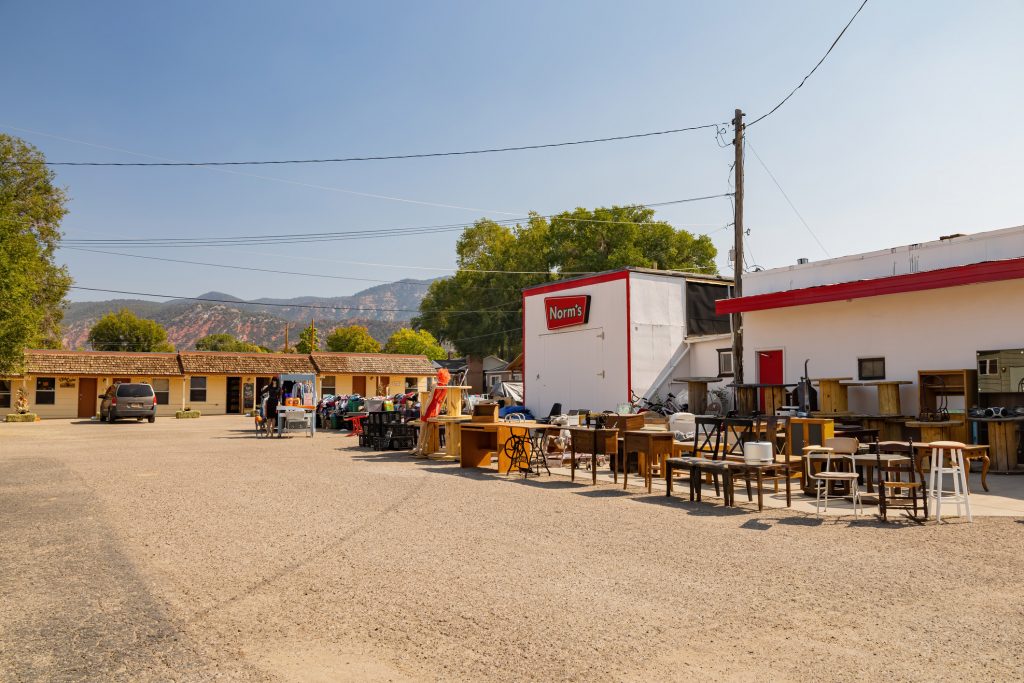
14. Buy Things Used
Whether you’re buying a pickup truck or tractor for your farm, or even small items like a shovel, everything is cheaper to buy used.
Most brand new items lose about half their value after you use them for the first time. So while it can be tempting to get something shiny and brand new, think about how much money you can save by buying used instead.
If you’re buying high-quality equipment, it’s likely going to last nearly just as long as if you had bought it brand new.
If you’re buying an old truck, sure it might need some extra maintenance and may even break down from time to time. But the costs of repairing it will still likely cost far less than if you had bought a brand new truck.
If you get in the habit of buying things with only cash, it’s also much harder to get into debt. You’ll make sure that you’re only buying things that you can actually afford right now.
Clothes, kitchen items and many other things are just as good to buy second-hand as well.
15. Learn To Fix Things Yourself
The next time that something minor goes wrong in your house, why not try to fix it yourself?
If you’ve got a leaky faucet or a running toilet, it’s worth trying to troubleshoot it yourself before calling in a plumber. Nowadays there’s a Youtube video explaining how to troubleshoot and fix almost anything. What might be a costly job if you call a plumber can often be fixed with a few minutes of work and an inexpensive part.
Some more complicated things like wiring electricity or installing a gas furnace should be left to professionals. But there’s usually no harm in trying to do a bit of DIY repairs and maintenance around the house on your own.
Big tasks like installing a fence yourself or re-roofing your house can be a lot of labor, but can save you a lot of money if you’ve got the time and energy.
16. Grow Your Own Mushrooms
Mushrooms bought at the grocery store are both overpriced and lacking in flavor and nutrients compared to ones that you grow at home. Even if your family isn’t eating a ton of mushrooms currently, they’re a great option to start growing and consuming if you want an inexpensive and deeply nutritious protein source.
Learn how to grow mushrooms here.
17. Make Your Own Bread
If you’re like most families, you go through a lot of bread every week. Bread costs much more to buy at the store than it does to make, so it’s an excellent candidate for low-cost homesteading. A basic sourdough loaf has a bit of a learning curve, but once you master it, you’ll feel markedly more self-sufficient.
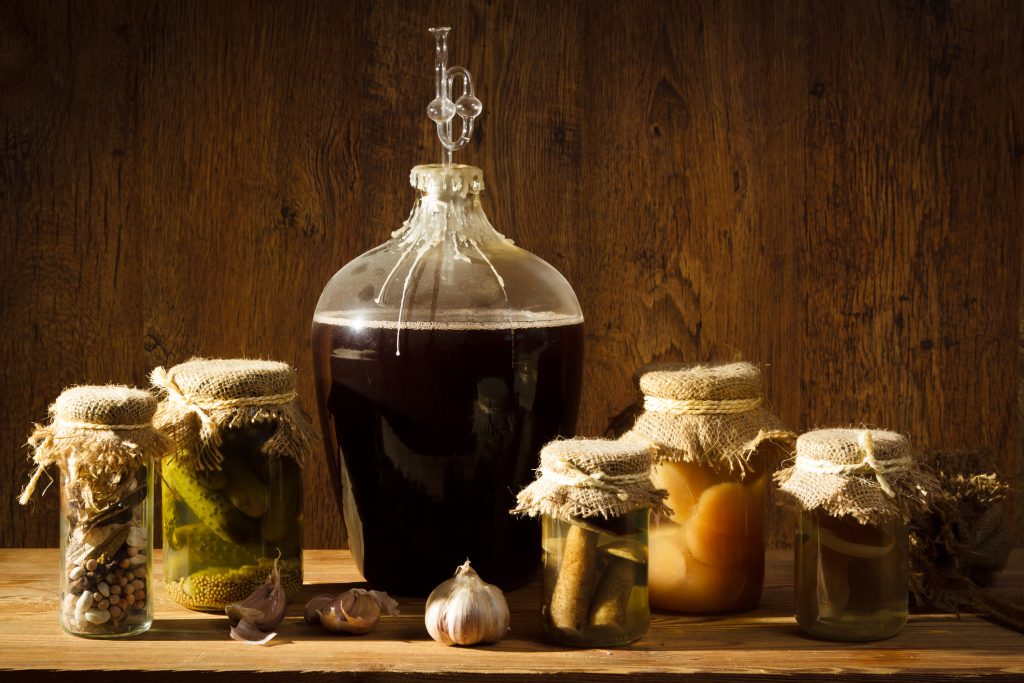
18. Make Your Own Alcohol
It’s no secret that your favorite adult beverage is marked way up in price at your favorite bar or grocery store, and those Friday nights out or indulging with friends add up quickly.
Admittedly, brewing your own beer and making your own wine take a while to learn, but once you’ve got the hang of it, you’ll be saving tons of money. Plus, you can make your drink exactly to your liking.
19. Make Your Own Yogurt
Yogurt is one of those staple foods that you’re better off making on your own. It’s one more step toward self-sufficiency, and you’ll save some money, too. It’s simple to make and requires just a few basic supplies: milk, a stockpot and canning jars.
We also recommend that you check out How To Start a Homestead: Our Step by Step Beginners Guide.
20. Find A Community
One of your greatest resources when you’re just starting on your homesteading journey is to find like-minded people.
If you already live in the country, that might be your neighbors and other farmers in the area. If you’re still living in the city, look for groups of gardeners and other like-minded people.
Friends are an invaluable asset to have. They might give you free seeds and vegetables, lend you a tractor or roto-tiller for the weekend, or just offer helpful advice on how to get started with your homestead. Farmers with years of experience can tell you all about the weather and climate, local laws, where you get cheap supplies and other important information.
Don’t be afraid to reach out for help. Homesteading can be hard to do all on your own. Especially in the beginning.
Final Thoughts
Worried that you’ll never be able to start homesteading because of money issues? Don’t write the idea off!
Even if you’re in debt, you can make changes to your lifestyle and how you handle money to start saving up for your dream property.
There are even things that you can do to start homesteading today from scratch, no matter where you are.
Homesteading includes a lot more than just growing your own food. Everything from bartering, preserving or learning how to sew will help you on your homesteading journey.
Getting to a point where you can live a truly self-sufficient lifestyle is something that might take years to fully achieve. But if you start small and continue to make small changes in the right direction, you’ll be well on your way to having your own homestead.
